FOURTH the estate
THE IMPERMANENCE OF YOUTH

THEME









THEME








Dear Readers,
It’s a new year, and we’re so happy to share our magazine with you again. We’re so excited to embrace the spirit of the new year–2023–and showcase the unforgettable memories we made over the past few months.
For this issue, we want to take a moment to reflect on the fleeting nature of our youth. As we grow older, it becomes increasingly clear that our high school days are but a fleeting moment in the grand scheme of our lives. It is easy to get caught up in the present and take for granted the energy, vitality, and freedom that come with being young. So, in this spirit, our staff decided to dedicate this issue to the beauty and uniqueness of our high school days.
Whether it is looking at high school 50 years ago or highlighting 18 year-old voters in our community–we invite our readers to recognize and accept the transient nature of youth. The stories told through this publication memorialize the present day: the mental struggle students work through, the digital remnants of our lives, and the sports we play.
In our stance of the staff, we had our community describe their aspirations and goals before they wanted to graduate. In that little time capsule, we can cherish the moments of our youth and make the most of the time we have. Whether it be through pursuing our passions, building meaningful relationships, or simply taking the time to enjoy the simple pleasures in life, it is important to make the most of the time we have.
As we reach the 5th anniversary of the Thomas Fire and Debris Flow, we must center ourselves within our shared values and community. After this year’s weather-scare, which threw into question our safety and disrupted the normality we desperately needed, we must come together to advocate for each other and stay unfazed.
So let us not waste a single moment of our youth. Let us make the most of the time we have and create memories that will last a lifetime.
Till next time, Alexandra and Luca
•
The Fourth Estate is an open forum created for and by journalism students of Laguna Blanca Upper School. We hope to use this space to cover events, interviews and topics of interest in greater depth. Our staff seeks to be a platform for creative expression and to report on events and ideas of importance to our readers and to focus on topics of significance and interest to inform and entertain the school community.
•
The Fourth Estate welcomes guest columns and letters to the editor. Letters must be signed and must be no longer than 400 words. Editors reserve the right to edit for length, clarity and/or taste. Anonymous letters will not be published. The Fourth Estate reserves the right to reject advertising. Opinions expressed in this publication reflect the perspectives of the staff whose goal is to inform our readers with reliable information from which to base decisions and opinions. Editorials represent the voice of the staff and are voted on by the entire staff. Columns and commentaries are labeled as such and represent the opinion of the author. The Fourth Estate publishes four issues per year with a senior insert in the last issue.
•
When two or three people work on a story, all names will be listed. If an editor rewrites a majority of a story, the editor’s name will be listed.
•
The staff strives for accuracy. When factual errors occur, mistakes are found or brought to the attention of the staff, corrections will be printed in a corrections box in the next issue.
•

This is the second issue of the new decade and 29th volume of the Laguna Blanca School, 4125 Paloma Dr., Santa Barbara, CA 93110, magazine, The Fourth Estate. Contacts are available at tmchale@lagunablanca.org, (805) 687-2461 x0317 or www.thefourthestate.net. Laguna Blanca School has an EK through 12th grade student population of 430 with 100 in the Lower School, 151 in the Middle School and 179 in the Upper School. The Fourth Estate is an 8.5 by 11 general magazine, created on MAC computers using Adobe InDesign CC2021, Imperial URW and Mencken Standard font families and printed on glossy paper free for students and $30 for an annual subscription. The magazine is distributed to all Upper School students through the school’s advisory program and sent by mail to subscribers with 300 copies printed per issue. We are associated with NSPA, CSPA and JEA.
From suicides at Stanford, selfharm at Yale, and rising rates of depression at Cornell, elite universities have dark secrets regarding their students’ mental well-being.
According to the Healthy Mind Study published in the Journal of Affective Disorders, 60 percent of college students suffer from some form of mental illness.
Support for suffering students following public pressure and lawsuits.

“Mental illness doesn’t diminish previous accomplishments,” said junior Sasha Drucker.
“Someone could work their entire life to get into a school. The development of mental illness is really hard to control.”
For universities such as Yale, the solution is to place students identified as “threats” on medical leave until they are deemed safe to return to campus.
This process, called reinstatement, requires students to reapply and write an essay explaining why they should be allowed back on campus.
One student affected by this policy is Nicolette Mántica, a junior at Yale who cut her arms to cope with stress.
thefourthestate.net
Nicolette was placed on medical leave after Yale discovered that she was harming herself.
“It wasn’t about helping me. It was about getting rid of me,” Nicolette told the Washington Post.
This controversial approach to dealing with mental illness has many different sides in addressing the emotional concerns and conditions of students.
“Given there is a point where a student needs to be hospitalized because of their mental illness, I believe it should be up to the college to do what they see fit in order to protect the student or others,” said junior Griffin Rick.
“However, I do not think that this should necessarily constitute expulsion or re-application.”
Once a student has an episode of mental illness, universities tend to find out through the medical institution or therapist the student ends up at.
Once Yale gets an incident report, it is up to the university to decide what to do about the student’s enrollment.
“An uncontrollable variable causes someone’s accomplishments to be
deemed worthless,” said Sasha.
“But, at the same time, I get it because mental illness could threaten other students.”
Pericles Lewis, the dean of Yale, responded to claims that reinstatement was unfair to mentally ill students after the Washington Post published an article interviewing students like Nicolette who were affected by the process.
Lewis defended Yale by arguing that it is essential that students “take the time necessary to improve their mental health to recover from whatever situation they are in.”
Yale president, Peter Salovey, announced that the university would be working to direct more money towards mental health services and limiting how laborious the reinstatement process is rather than removing the policy entirely.
Although Yale has addressed the claims, students like Nicolette do not see the responses as an apology for the reinstatement policy.
“They didn’t take into account who I was and what I needed,” said Nicolette.
“Their only concern was that I leave.”
Universities are under fire for “reinstating” students who suffer from mental illness because they are considered a liability.
WORDS and PHOTO by LUCIA CAMP
cases have been successfully delivered to the Supreme Court in hopes of doing the same.
receive equal evaluation during their admissions process in a “deliberate and thoughtful way.”
funding, it must yield to the federal stature on whether race discrimination is banned, like UNC.
WORDS and ART by JINLING WANGOn Oct. 31, over 100 students donning light blue bandannas and signs gathered outside the Supreme Court Building in light of the hearing determining whether the Supreme Court should consider race in the college admissions process.
After decades of close precedents held by the justices of the Supreme Court, affirmative action has recently been reexamined in academia by the newly appointed conservative court with a high probability of overruling.
While still playing an important role in college admissions today, affirmative action dates back to the Civil Right Movement, prompting colleges and universities to consider an applicant’s race when admitting students. Affirmative action allows more diversity and representation among women and people of color in admissions and the workforce.
While new policies were created to facilitate minorities in the workplace, more policies were implicated to show support towards underrepresented groups in college admissions.
When the United States started considering race in college admissions in the 1960s, historically excluded students from top schools were accepted. According to the Development Policy Review of 2022, affirmative action is, “A carefully designed affirmative action policy that fosters meritocratic inclusion which embodies key principles of meritocracy and social justice.”
However, more than half a century later, colleges, courts, and voters have begun to discuss whether or not race should continue to be a factor in college admissions, putting the affirmative action movement at risk.

This year alone, the Supreme Court has received two affirmative action cases that have a chance at determining whether affirmative action could be banned.
Similarly, in 2003, the case of Grutter
New York Times, there are countless accusations of discrimination towards Asian-American students by utilizing subjective standards to measure their personalities of sociability and compassions limiting them during admissions.
Known as the “model minority,” Harvard’s lawyers responded that the allegations were built on faulty statistical analysis noting there was never any discrimination directed toward Asian-American applicants, defending their race-conscious admission practices.
On the other
After the court granted the hearing, Blum said, “Harvard and the University of North Carolina have racially gerry mandered their freshman classes in order to achieve prescribed racial quotas,” stating that “Every college applicant should be judged as a unique individual, not as some represen tative of a ra cial or ethnic group.”
v. Bollinger changed college admissions in the country forever as affirmative action policies were implemented, trailblazing equality and diversity in schools across the nation.
The future of race-conscious admissions programs is on the line as Harvard, and the University of North Carolina begin to doubt whether affirmative action is lawful in higher education.
During a hearing in 2016, the court’s majority decisions supported admission programs. With a recent shift in court membership, this case has been approached with suspicion, endangering the precedent allowing race to be a factor when applying.
In Harvard’s case, according to The
hand, in North Carolina, the plaintiff argued Chapel Hill discriminated against both white and Asian applicants by prioritizing those of Black, Hispanic, and Native American backgrounds.
In response, UNC defended the ongoing admission policy that promoted and supported educational diversity under the precedents of the Supreme Court.
With a high chance of the ruling limiting or banning race as a factor in admissions, an echo was heard throughout the nation, affecting higher education for decades to come.
If affirmative action is overruled, the number of Black and Latino students will decrease in selective schools.
Established by Edward Blum, an entrepreneur of several lawsuits regarding race-conscious admissions policies, his
Blum’s Students for Fair Admissions organization (SFFA) lawsuit was based on the allegations directed toward Harvard. It claimed there was discrimi nation against Asian Ameri cans, who have statistically shown higher standardized test scores and grades than other ethnic groups.
In hopes of combating the statement, Harvard and expressed concern about the cases jeopardizing the fundamental precept of college admissions.
Harvard president, Lawrence S. Bas cow, replied, emphasizing the pushback they would receive after the freedom of diverse campuses and communities would be endangered after prospering for 40 years.
While a spokeswoman for the University of North Carolina, Beth Keith, says that each applicant should
As both universities succeeded in Harvard and UNC’s cases, the Supreme Court has been affected by the opposite legal regimes in the two schools.
However, because Harvard is a private university receiving monetary
As a public university, they must also
diversity, Hewitt argues, “Race-conscious admissions policies are a critical tool that ensures students of color are not overlooked in a process that does not typically value their determination, accomplishments, and immense talents.”
“Selective universities like Harvard and U.N.C. Chapel Hill have long struggled to admit students of color, who have over time been excluded for access to elite institutions and are historically marginalized.”
- Damon Hewitt
The future of diversity in higher education remains on the line as the decision on whether or not colleges and universities can use race as a factor remain in the hands of the conservative Supreme Court.
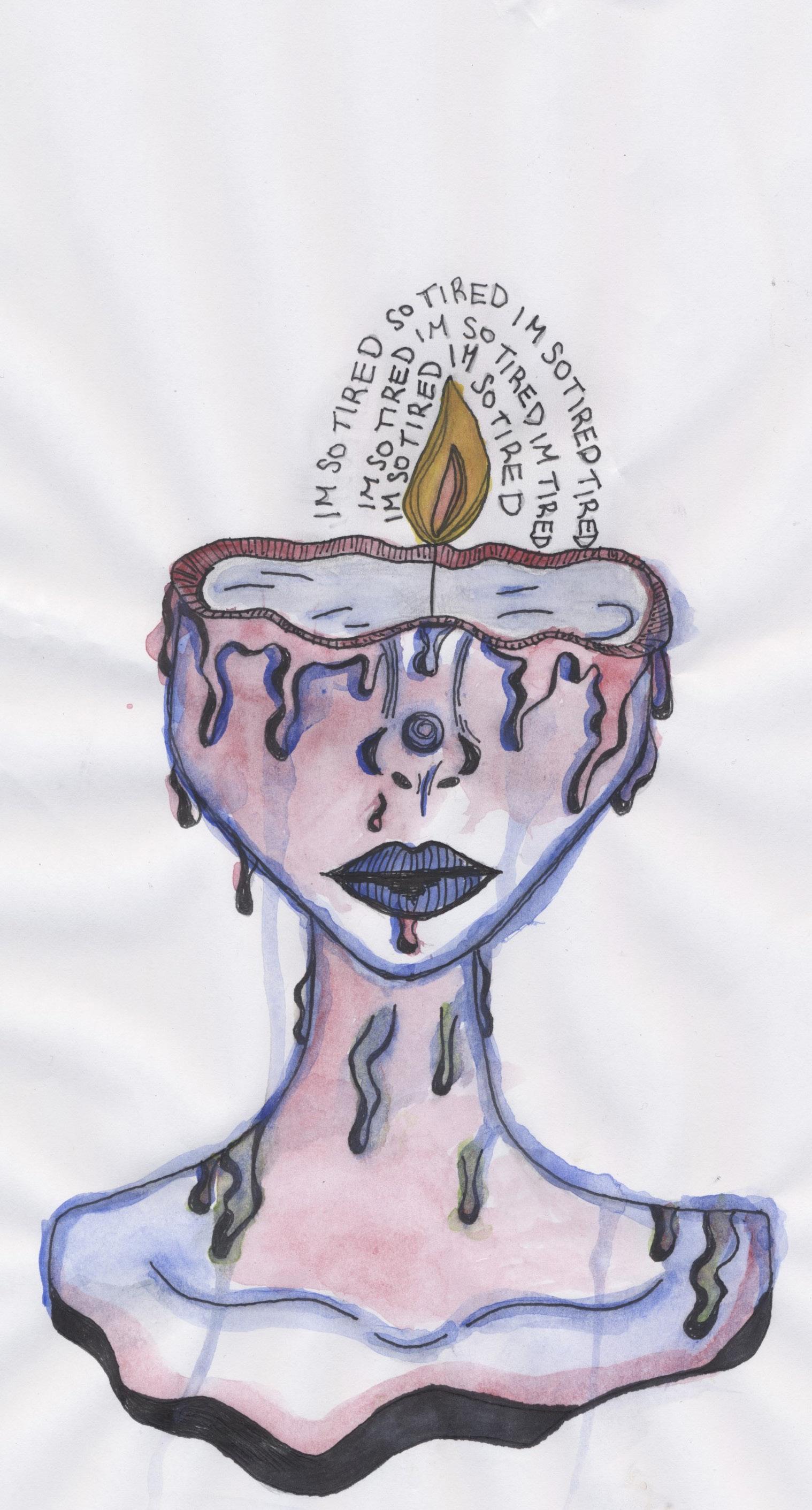
The piles of unfinished books and assignments, the sound of notifications signifying more work to come, the voices of teachers and coaches ringing, signaling impending decline. This is the aura of high school; depression floats above thousands of students’ heads day after day with little relief.
Weekends consist of unruly afternoons filled with emails, homework, studying, and sports games. It can become overwhelming exceptionally quickly.
One of the key contributors to depression is stress. High school students are constantly pressured to succeed academically, socially, and athletically.
According to Mental Health America, 59.8% of youth have experienced depression, while 37% of high school students experience anxiety.
The pressure to receive good grades, whether self-inflicted, peer, parental, or teacher-based, stress significantly contributes to the high rates of poor mental health in teens.
“Good grades are the most important to me. I stress myself out to no end,” said freshman Evie Comis. “For me, the pressure to do well comes from myself because I have really high standards for myself.”
Self-inflicted pressure to do well starts on the first day of freshman year. While positive effects include pushing students to strive to do well and develop valuable habits, when it reaches a level of imbalance, students cannot escape the burden of always needing to do better.
“The pressure I feel to do well comes from the hopes of getting into college,” said freshman JJ Stone. “Trying to achieve good things and get good grades so I can get into a good college is important to me.”
Another dominating factor that contributes to adverse mental health is the college admissions process.
The concept that colleges always have eyes on students and judge their every move leads to high anxiety and self-loathing, especially when a grade begins to drop or when any struggle begins.
One of the most pressing stress factors is the copious workload students receive each night.
“The most stressful part about school is the homework because some nights it is fine, but others I have after-school activities, and then homework as well, and it keeps me up at night,” JJ said. School can affect mental health both positively and negatively.
“I love this school, but I feel like there is a lot of work and a lot of pressure to do well to get into a good college so you can do well in life,” said Evie. Attending school and participating in activities is healthy.

“School is good because I have a social environment and can be with my friends, but it can be hard because homework can change the tone of your day,” JJ said.
In high school, the expectation for students is to learn the standard subjects of English, math, science, and history courses.
In reality, high school tends to be the evolution of learning how to juggle the grueling workload while also learning how to understand and handle one’s mental health.
Without the right balance between school and rejuvenation, which many do not receive, mental illness can quickly fall into a downward spiral.
Senior Kincade Avery shared his understanding of school and mental health.
“Every year, there is a different challenge, it takes time to catch up with your mental state, and school makes that difficult sometimes.”
Five years ago with mountains ablaze and smoke filling the air, residents between Ventura and Santa Barbara counties in an anxious frenzy evacuated their homes to flee from the Thomas Fire.
The Thomas Fire began on Dec. 4, 2017, and was followed by the Montecito mudslide on Jan. 9. The Thomas Fire burned 281,893 acres and claimed two lives, while the mudslide killed 23 people and damaged or destroyed over 500 structures.
The community got a “White Christmas” of falling ash rather than snowflakes, as the sky seared red instead of blue.
The fear of Santa Ana winds lingers to this day, and the spark of a flame reminds Southern Californians of the de struction they had faced.
but it was not the end of tragedy—it was the spark of another. burn scar left by the fire.
California’s history as the newly barren mountains began to crumble down on Montecito.
Residents scrambled out of the Red Zones and tried to salvage belongings, loading their cars with pets, prized possessions, and photo albums.
The Santa Barbara community still recalls the terror—remembering the honorable first responders, the volunteers of the Bucket Brigade, and brave neighbors.
Five years later, the community planned to gather to honor the 23 lives lost in the annual “Raising Our Light” memorial, but the event had to be canceled due to severe storms reminiscent of the events that took place on Jan. 9.
Another storm hit Montecito, which the National Weather Service called “the most impressive storm since Jan. 2005.” The harsh weather conditions with evacuation orders acted as a reminder to residents of the mudslides.
The Santa Barbara community remains strong, continues to honor what has been lost, and shows gratitude for all that has been rebuilt.
“I lived in Ventura at the time of the Thomas Fire. I remember driving to school with a fire burning along the freeway. I still have video of it on my phone.
A former LBS teacher lost her home in Ventura.
I remember going to Target to buy essentials for her and her family since they lost everything.
I took the Amtrak train into Santa Barbara with hundreds of other people. A group of Laguna teachers, parents, and students met on the train platform in Santa Barbara and Mr. Abrego picked us all up and took us safely over to Hope Ranch.
After five years, I always think of the two children who perished in the mud
“The Thomas Fire was a really stressful time because we didn’t know when we would be able to go back home and return to our normal lives. I remember it felt like months and months and months until I finally got to go home.
I remember seeing on the TV the news of what was happening in Montecito—all of the houses totally destroyed, all the mud everywhere.
It was weird that that’s where I live. I usually see events like this happening on the news, but I wouldn’t have imagined it happening in my town. My house was the only one on our street that didn’t get flooded. We have to appreciate what we have because we don’t know what’s going to
“The fire and mudslides were extremely traumatizing for 9-year-old me. During the mudslides, I remember waking up around 2 a.m., bawling to my mother, simply because I was scared of the harsh rain.

The sky became red due to an explosion in the mountains. We decided to quickly pack our bags with our main necessities and flee somewhere safer.
Our entire driveway was covered in debris about knee deep. After staying in a hotel for two weeks and we were finally able to come home, I ended up finding a dictionary, little girl’s shoes, a pack of baby diapers, and a broken piece of china. Each year, I go to the ceremony where we remember those who lost their lives to the debris flow.”
The Santa Barbara Community remains strong, continues to honor what has been lost, and shows gratitude for all that has been rebuilt.

A look into what it is like to go to school with your sibling.
WORDS and PHOTOS by JACKSON BALTES
Ashton Lustfield:
Q: What grade are you in?
A: I am in 7th grade.
Q: What is it like having an older sibling in the same school as you?
A: It’s nice because teachers will recognize you for having an older sister, and you will have teachers that will already know something about you.
Q: Are there any perks to having an older sibling on campus?

A: Kinda like I said before, teachers already have an acknowledgment towards you or know somewhat who you are so that you don’t feel completely brand new like when I first joined the school this year. So yes, I think there are some perks.
Scarlett Lustfield:
Q: What grade are you in?
A: I am in 9th grade.
Q: What is it like having a younger brother on campus?
A: I don’t see him very much because I’m in the upper school and he is not. When I do, it is really weird and he knows all of my friends, which is also awkward, but I think they all like him.
Q: Do you think there are any benefits to having a younger sibling on campus?
A: There are for him, not for me! I help him if he ever needs it because I’ve already done everything he’s done.

Michael Couvillion:
Q: What grade are you in?
A: I am in the 7th grade.
Q: Do you enjoy having an older sibling on campus?
A: It’s fun to see them around and I can relate to them about school.
Q: What is it like having an older sibling in the same school as you?
A: It’s kind of funny to see them walking around but I think it’s nice because they can tell me how everything works and about all the classes that I will take.
James Couvillion:
Q: What grade are you in?
A: I am in the 11th grade.
Q: What is it like having a younger brother on campus?
A: It’s kinda funny seeing him and his friends just because a lot of them come up to me and they know who I am just through Michael. It’s also just kind of cool knowing what it’s like to be that age at Laguna.
Q: Do you think there are any benefits to having a younger sibling on campus?
A: Yeah, it’s convenient just in case I forget something that he brings with him and when I couldn’t drive we would get rides at the same time.

Since his arrival on campus, Bill Ellis made his mark with a distinct brand of teaching, drawing in students and teachers alike.
Ellis attended Plymouth South High School and said that his “turning -the-leaf moment” occurred junior year when he began to take full advantage of the classes and opportunities offered.

When asked who his biggest influence was during that time he said, “My art teacher, Mrs. Sykes, who taught me for over four years. After high school, I wanted to be a cartoonist, although I would eventually go down another path.”
Ellis attended college at the University of Massachusetts Dartmouth: “I really wanted to take full advantage of everything. I was hoping to major in physics and math while minoring in computer science and art,” he said.

Although he had to drop the art minor due to a scheduling conflict, he graduated Summa Cum Laude in physics and math.
Ellis currently teaches physics in the Jackson Physics Lab, and has worked in an impressive number of positions over the years.

“I’ve worked in a pharmacy, as a garbage man, in a toy store, as an air traffic controller, done particle physics researcher at Brookhaven National Lab, written code, and
WORDS by HUDSON MAYFIELD PHOTOS by JACKSON BALTEStaught over the course of my life.”
Ellis explained how he was inspired to teach by “his desire to make a long-lasting difference in the world” other than he could have in coding, where nothing is permanent as all code is eventually replaced.
He equated coding to creating a dandelion: an intricate plant that would eventually be torn apart by the relentless winds of time.
“I saw education as a long-term positive seed for the future of the world, especially when I thought back to my high school and college mentors, which had such an impact on me.”
He transitioned to teaching in 2002, earning a master’s of education and degrees in physics and math at Worcester Polytechnic Institute.
“I choose to teach physics because of my background and the challenge it presented.”
When asked about his experiences at Laguna, he said he felt “appreciative to be here at the school and in Santa Barbara,” as well as the opportunities to teach and learn from others.
What motivates him today, Ellis discussed his love of teaching and leaving a positive mark.
“What inspires me today is the constant reminders of the value of long-lasting positive things for the world, and the fact that a job worth doing is a job with doing well.”
In the United States, 18 is the start of adulthood, independence, and arguably most important, engagement in the democratic process. When one votes, they are participating in the democratic process and helping to shape the future of their country. Voting is a way for 18-year-olds to express their values and to hold elected representatives accountable for their actions.

Registering to vote at a young age sets precedent and can nurture a lifetime of participation in the democratic process. In the November 2022 Midterm Elections, 27% of 18-29 year olds voted, the largest youth voter turnout in a midterm in three decades. It was young people’s support for Democratic candidates, specifically, that led them to have a major impact on elections in key states.
At Laguna, out of eight eligible student voters, five voted. Low youth voter turnout can be attributed to a plethora of factors, including lack of information about the candidates, lack of access to polling places, lack of transportation, or work or school conflicts on Election Day. Seniors Thomas Couvillion and Hudson Mayfield both voted and share their experience and what brought them to the polls.
Q: Why did you decide to vote in the midterm elections?
A: I knew a few of my friends had decided to vote which definitely influenced me to vote. The main reason I voted was because of my AP Government class, where we spend most of the time talking about political systems.
Q: Do you think it is important to vote at 18 (or as early as you can)? If so, why?

A: I think that it is. I believe it shows you are ready to start participating in society and it also helps spread the ideas to our younger population.
Q: Are schools doing enough to educate students about the importance of voting? If not, what could be done to help students become informed on voting issues?
A: Within my AP Government class, there was an incentive to vote, but as a school I do not think there is a very big emphasis on it. I think if the school put out information on how you register to vote, that would motivate students.

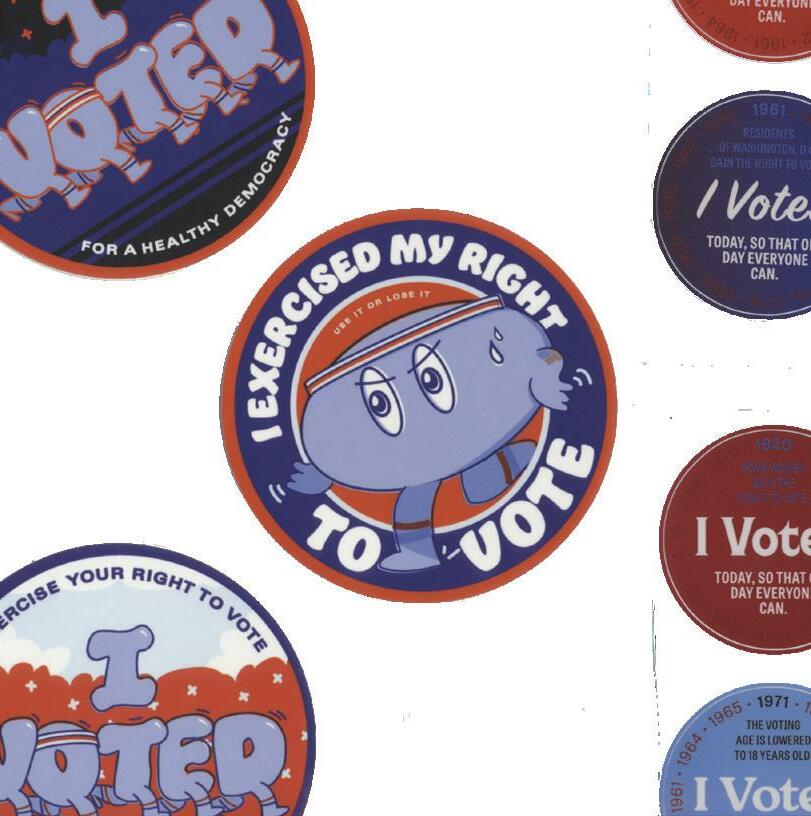
Q: How can our generation prepare future generations to get excited to
A: By increasing awareness that voting is our civil duty and prov ing to younger generations that our votes do matter, we as a generation will see that it is crucial to support the values we believe in.
Q: Why did you decide to vote in the midterm elections?
A: If you are going to hold any sort of political opinions you should at least vote on them, otherwise what is the point? I felt motivated by the impact that local politicians have had on Santa Barbara in years prior.
Q: Are schools doing enough to educate students about the importance of voting? If not, what could be done to help students become informed on voting
Schools in general don’t talk about voting as much as individual teachers do, but I think that’s the way it should be. It is a bit of a slippery slope if the school itself is in charge of encouraging students to vote, but when your teachers, coaches, and other figures in your life, I believe it is a positive influence.
How can our generation prepare future generations to get excited to vote? We are lucky enough to live in a state and country where it is relatively painless to vote– therefore students should take initiative to go out and vote. Our generation should be pointing out the fact that we have easy access to polling and how critical voting is for the issues
The youth vote has the potential to be extremely influential in this country.Thomas Couvillion Hudson Mayfield
Born in Plymouth, Massachusetts, physics instructor Bill Ellis makes waves as one of the newest members of the Laguna faculty.


Ahead of their opening game in this year's World Cup, the Iranian national team stood sideby-side and refused to sing the national anthem in protest to the movement in their country.

This protest movement erupted in Iran following the death of the 22-yearold Mahsa Amini, who was detained by the morality police, a force in Iran that dictates what women can wear under the mandatory hijab laws.
Amini was first detained for violating the dress code and was later killed while in police custody.
Furious and deeply frustrated by this incident, demonstrations led by women erupted in Iran, protesting their country's religious laws and leadership and defending women's rights.
Aluma Daria Bahrami (Etzedai' 12), an Iranian American, wrote in her blog:

"So many of us also feel disappointed, muzzled, and angry knowing that a headscarf is all that Iranian women are known for in America. The western lens continues to prevail over the Iranian identity as Iranian women are freely victimized, Iranian men are villainized, and non-binary people are completely excluded."
There is much more to women's struggle in Iran
WORDS and ART by LUCY WANGthan the roosari, the Farsi term used for a head-covering.
The western narrative oversimplifies the hijab laws and the dress codes, but that is only one aspect of the larger picture.
"Focusing on the protest du jour, such as the legalization of driving or the freedom of a woman to dress how she wants, minimizes the other challenges facing Middle Eastern communities and makes these very public outcries feel performative and inauthentic." Daria wrote.
Women in Iran have been fighting for the right to education, driving, freedom of expression, and more.
The western media's overexploitation of the term hijab can be used to grab the

reader's attention.
Still, it has oversimplified the issue and created a stereotype of Iranian women being as obedient and submissive.
However, women are the minority in Iran. They hold significant influences in society.
"Women carry a lot of influence and power, but in subtle ways. Daria said those same women are being louder, and they've decided enough is enough, "I just hope that with enough space and support, Iranian women around the world can feel more empowered to define their own roles."
Middle eastern women are often portrayed as powerless victims by the western media, "They are often exoticized, particularly through a western lens, and seen as quiet, submissive, domestic figures, said Daria. "If nothing else, I think these protests are shining a light on the fact that that stereotype is simply not true."
The protest movement is an example of women's power and capacity.
Sparked by the death of a 22-yearold, the story is not simply about the oppression of women but rather about resilience, tenacity, and strength.
Now that educational institutions around the country address the dangerous consequences of sports hazing, athletic teams now face changes in their culture and values.

While Iranian civil rights spread throughout the globe, the political stability of the nation’s theocracy is beginning to erode.
WORDS by ADEN MEISEL ART by ALEXIA ACOSTAWith the recent abolishment of Iran’s stern and religious morality police and worldwide protests pressuring Iran to reform its religious policies regarding hijabs, what is stopping this liberal momentum from dismantling Iran’s theocratic and fundamentalist core altogether?
Before Ruholla Khomeini, Iran’s first Ayatollah (supreme religious leader), Iran was a secular state run under the monarchical rule of the Shah—whose reign lasted for over a millennium.
In fact, according to social science instructor Dena Montague, “Women were banned from wearing hijabs by the Shah in an attempt to modernize with the rest of the world.”
However, the Shah’s modernization vision was heavily funded by American oil money.
As a result, many Irani nationalists propagated that the Shah was a puppet for western powers seeking to spread influence over the Middle East, which resulted in growing public disapproval of the Shah’s reign.
A violent revolution in 1979 brought a conservative Muslim scholar, Ruholla Khomeini, out of exile and to the helm of the power vacuum in Iran after the Shah and his wife escaped to the United States.
Interestingly, Khomeini initially protested against the Shah’s absolute power over Iran.
Still, when Khomeini realized that absolute power would be the easiest way to instate his religious beliefs on a national scale, his ideologies changed.
According to Montague, Khomeini gained his majority using radical Shia Islamic rhetoric that “distinguished Shia Islam from Sunni Islam, mostly over arguing that they had a direct lineage from Mohammed the Prophet.
“During this time,” Montague said, “is when you begin to see a huge split between Sunni and Shia relations, both politically and culturally.”
As he grew in popularity, Khomeini fueled Shia “distinguishment” from Sunni Islam and used Shiite values “as a means in 1979 for political solidarity, nationalism, ethnocentrism, and oppression,” Montague said.
Unfortunately, Iran’s theocratic government still uses Islam as a political tool today.
“The regime has time and time again used both religion and women as tools to project pressures of conformity. This can be seen in how Iran forces women to wear hijabs in order to identify as good Iranian citizens and Islamites,” Montague said.
“Internationally, Iran has also used its Shiite views to create tension with its political enemies, such as Saudi Arabia and Syria, through its religious differences. From my understanding, it wasn’t Islam that created such extreme tensions between middle-eastern states—it was the state that used it as a tool to create nationalism and spread
influence around the region, particularly into Iraq and Pakistan. I feel like there should be a distinction between how religion is used as a political tool for oppression and how religion exists for people to find some sort of happiness or meaning in life,” Montague said. But with these recent uprisings occurring both in Iran and worldwide, the stability of Iran’s political climate has been significantly weakened.
According to The Global Economy, a website that collects international political, economic, and business data, Iran’s political stability index, which is measured from -2.5 to 2.5 based on the likelihood of a revolution, has decreased from -0.81 in 2016 to -1.62 in 2021.
Iran has combated these likelihoods by embedding core regime values in their education system.
According to Sara Damavandan’s article in IranWire, “Islam is a central tenet of Iran’s education system. Not only has religious education become one of the most important subjects in the classroom, but religion has also become central to the teaching of history, language, social studies and the sciences.”
This is how they control their population and maintain their authority
and legitimacy as a state, which is by no means a new method — autocratic regimes in the past have done and still do the same thing.
Theocracy is rooted in education. If a theocratic regime cannot provide its citizens with the core tenets of its religion,
discern fact from someone else’s reality or faith.
Separating state education from religious affairs is more relevant than ever.
that regime will fail to keep its population in line.
Around the world, countries have implemented policies that separate the church and state to avoid Iran’s situation.
It is written in the Bill of Rights here in the United States. However, fundamentalists still find loopholes in legislation to insert religious ideologies into state education.
Such ways include religious student-run clubs, faith-based after-school programs, and even sponsoring school sports teams.
With an upcoming generation influenced by technology and its unlimited sources of information, it is becoming more and more challenging to
According to Assistant Regional Director of Anti-Defamation League (ADL) Santa Barbara/Tri-Counties, Ashley Myers, “Public education is one of the most important resources we have in this country. For its success — and thus in turn the subsequent success of our nation — students of all backgrounds should feel that they belong in their classroom.” For the sake of our government and many others, religion cannot be weaponized through education to destabilize.
The repercussions in Iran have made it clear that religion, more often than not, is an overall oppressive governing mechanism.
The fact that Iran’s citizens dare to protest a government that is using their religion against them as a means of control is a momentous step in stabilizing the Middle-Eastern region.


Amid these recent Irani protests, it is most important to note that it is not Islam being protested, but the way the government uses it.
“Most people in the world just want to live free, and for the most part, countries don’t use religion with bad intent as Iran does,” Montague said. “Islam is centered around peace and empathy, but the government’s interpretation of Shia Islam contradicts it.”
“[T]here should be a distinction between how religion is used as a political tool for oppression, and how religion exists for people to find some sort of happiness or meaning in life.”
–Dena Montague
Although the youth of each generation is fleeting, there is much to learn from the prior experiences of those in whose footsteps we walk in.
Whether it is Trish McHale’s experiences growing up just outside of Philadelphia in the 50s and 60s, Daniel Ary’s boarding school education, Rose Steeber’s Brooklyn, or Grant MacNaughton’s contrasting yet relatable British schooling.
McHale’s high school experience in a large public high school just outside of Philadelphia was radically different from ours in terms of size and scope, “School could be crowded at times,” she said—there were plenty of commonalities.

“We spent a lot of time listening to music at coffee houses during the weekends,” McHale said, just as many Laguna students spend time at nearby coffee shops with friends.
There were stark differences as well, however. “We walked a lot more than teenagers do now. There weren’t any soccer moms, so if you wanted to get somewhere, you usually had to walk or bike.”
A quick Google search revealed that the distance from her childhood house to her school was over a mile and a half, meaning that she walked 3.2 miles each day, rain or shine, a feat that would be alien to many younger members of our community.
McHale concluded by discussing the importance of music, especially bands like The Rolling Stones and The Beatles. This high school phenomenon has stayed the same since the British Invasion first arrived on our shores almost 60 years ago.
Today, students listen to just as much music as their earlier counterparts, although it is much easier to overhear Travis Scott or Drake around school than the Stones.
Grant MacNaughton also discussed the importance of music. “There was this band, Roxette,” he said. “At the time, I thought that they were the embodiment of Rock’ n’ Roll, but in reality, they were a Swedish group that sang a lot of love ballads. I loved them, though, and I always tried to pass my love onto others, even if I rarely succeeded,” he said.
MacNaughton grew up in the tourist town of Blackpool,
located on the coast of Northern England.
Blackpool had fallen on hard economic times during his high school years, as the once thriving tourist industry was hit hard by the prevalence and affordability of air travel to France.
Regardless of this recession in the tourist industry, MacNaughton remembers working throughout high school.
“I started with odd jobs, all of which related to the tourists. Whether it was carrying their baggage and luggage across town to their hotels or helping them around town, we gained a sense of independence and self-reliability from the money we earned.”
MacNaughton explained that the British education system differs considerably from its American counterpart.
At the time, state school, the equivalent of public schools in the United States, ran until students were 16, when they could focus on vocational skills, enter the workforce, or continue with higher “A Level” classes. “I loved school, especially math. I had a teacher, Mr. Greenwood, who was a kind of mentor to me. He really helped me grow my passion for math.”
Despite the dramatically different systems of education, MacNaughton’s experience with mentors mirrors his counterparts in America both then and now.
During the weekend, MacNaughton remembers enjoying the activities which come with a tourist town, including movies and ice skating, just as many do here in Santa Barbara. He talked about his soccer and rugby. You can now find him cheering for the Kansas City Chiefs.


Dan Ary’s high school experience is unique for various reasons, including the fact that he attended a boarding school.
“It was a different type of schooling, he said. “It was a very academic school, we were required to take four years of Latin and English, but we also had no advanced math classes. I often found myself teaching subjects like geometry to my peers as the teacher would often leave many students confused.”
He continued to talk about the difference that time has had on college applications, explaining how there was no college counselor.
“Things were very different. Everyone applied to a handful of schools, and about 80 percent got into the school of their choice with a scholarship.”
Ary discussed the commonalities between his school and Laguna, noting how “The small class sizes here and at my high school made it hard not to be noticed.”
The small class sizes also allowed teachers to be flexible with their plans and curriculum, a benefit that he values highly about Laguna.
When asked about recreational activities in high school and the community, Ary responded, “We played a lot of pool in high school, but not much TV as the school had forbidden it, but that led to us getting to know each other better through the time we spent. The community was so tight we were like a family.”
Rose Steeber and Dan Ary’s high school experiences were similar in several ways, even though Steeber’s public school in Brooklyn, NY, was much larger than his boarding school.
Like Ary, she described the environment as “very scholarly” in academic classes, particularly English and Latin.
“I had one English teacher, in particular, Ms. Berman. She was my AP English teacher for what would now be AP Lit, but at the time, we only had one English class. She had more confidence in me than I had in myself, even going as far as to threaten to sign me up for the AP test if I didn’t do it myself. I ended up getting a five, and her faith in me is something I will always remember.”

On the weekends, Steeber worked in a grocery store, part-time, 20 hours a week for five years, eventually becoming the store’s highest-paid part-timer.
Like most students at Laguna, she said, “My interests in high school drove me.”
In particular, “I loved history and reading the true classics, as well as the class discussions which accompanied them,” a passion now passed down in her Latin classes.
Although much has changed since these teachers attended high school, many similarities have held steady over the past 60-plus years.
These enduring similarities include simple things like ice skating, going to the movies or a coffee shop with friends after school, and the essential and meaningful connections with teachers that are critical to high school, both then and now.
Although time may make superficial changes to how these connections are formed, such as the rise of the Internet, their importance never fades.
Trish McHale Journalism, Public Speaking, Community Service Assembly & Senior Projects Dan Ary Math & Computer Science Instructor Grant MacNaughton Mathematics Instructor Rose Steeber Academic Services Coordinator & Latin Instructor“We walked a lot more than teenagers do now. There weren’t any soccer moms, so if you wanted to get somewhere, you usually had to walk or bike.”
- Trish McHale
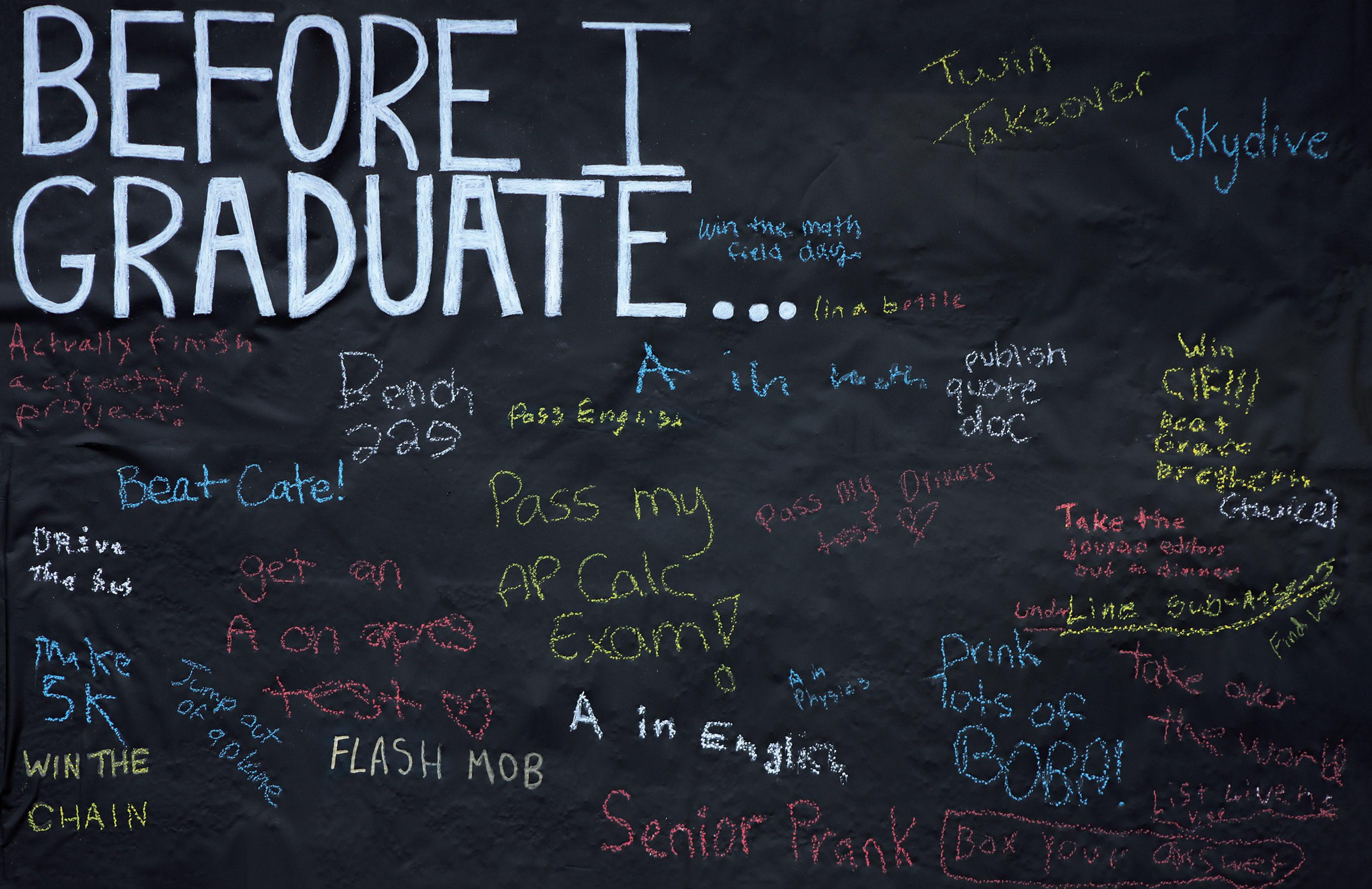
between students become prevalent, the need to be the best or achieve something greater leaves zero room to do “average” as greatness becomes the basis of criterion.
WORDS by JINLING ART by LUCY WANGOnce Upon a Time, I was perfect among a sea of millions chasing the same incessant dream as I, of fleeting prestigious Ivy Leagues, with skyhigh GPAs and towering amounts of extracurriculars.
From a glimpse of light at the crack of dawn to the clock hitting 1 a.m. outside in the pitch dark, exhausted teenagers from all over the nation gaze blankly at their halfwritten paper illuminating from a computer screen as unfinished math worksheets litter their desks.
While eyes begin to strain and students’ heads pound telling them to stop, they simply can not.
They can not stop, can not burn out, and can not break under pressure, for fear of failure overshadows everything, including their youth.
While this may seem like an excessive depiction of a high schooler’s routine, according to Researchers.com, 75% of teenagers always or often feel stress from academics daily, becoming consuming in hopes of embodying the ideals of a “perfect student.”
As college admissions lower their acceptance rates and heighten their standards, high schoolers begin to feel the overbearing hold of academia has more than ever, diluting themselves to a single grade. Perfectionism becomes an
identity. It obscures their opportunity to discover themselves in such a quintessential time as adolescents.
Constantly in an inverse relationship as expectations continue to increase, pressure expands, pushing the idea of average out of the frame on a scale of excellence, but at what cost?
Blinded by the desire to prove ourselves to parents, colleges, and others, this fixation on unrealistic standards captures the vulnerability teens face to achieve the unparalleled.
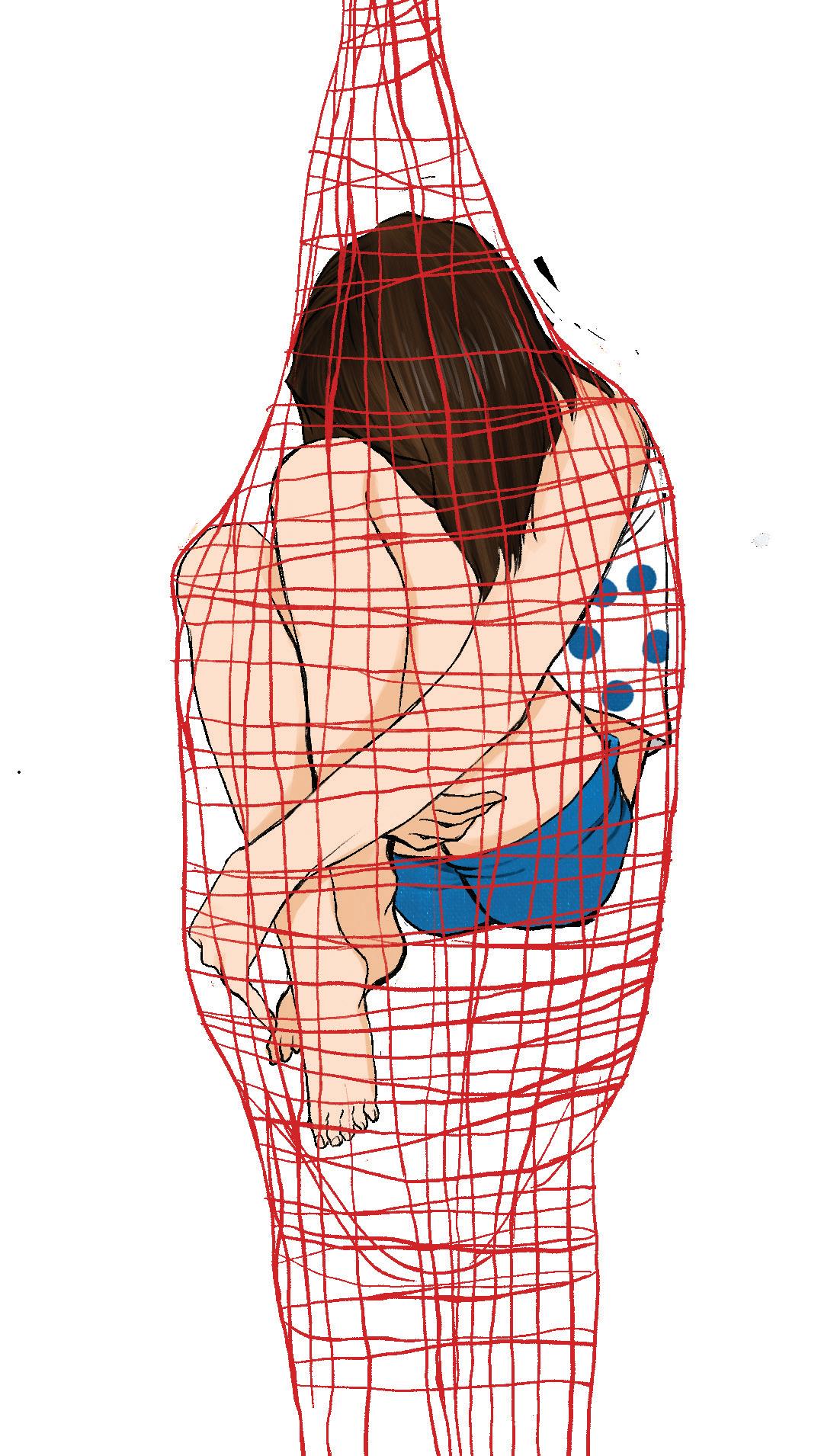
“The collective group mentality that sometimes occurs around the college process can be really toxic because all of a sudden you start doubting what you want and start asking should I want what my nextdoor neighbor has, should I want that person’s dreams, is my dream enough,” said Upper School Head Melissa Alkire.
Suddenly, if you fall short of that expectation at any given moment, there is little to no acceptance, as this motivation to become the best
only becomes your worst enemy. When teens don’t know how to deal with failure, it sometimes becomes overbearing, affecting students’ mental and physical health and compromising their social life. As schools continue to emphasize achieving the best grades, valedictorian, and Summa Cum Laude, students have begun valuing themselves to the letter on their report cards as if an extra “+” determines their worth as teens. Even if high schoolers have such a profound understanding of complex issues, when all eyes are set on achieving perfection, students struggle to understand who they are from their grades. As individuality becomes even harder to distinguish when groups of students file out of the classroom grumbling at their mistakes, it might have been a 92%. But when applying to colleges, it becomes a number game students scramble to collect community service hours from buffering their GPA and SAT scores for admissions.
“I think the hard part is when kids are stretching themselves so far because they feel like they need to compete with some outside standard that they lose the joy, they lose joy in the learning process,” Alkire said. When fostered in an environment where constant comparisons
While this idea of “healthy” competition might be the key for kids to achieve greater lengths, students become inquisitive and try harder through this detrimental social motivation to become the top 1% at school.
Not only seen in and out of the classroom, but perfectionism is also integrated into all educational formats fostering these qualities students labor to achieve. “…every college and university receives hundreds of thousands of applications that are all perfect and the colleges have to look and ask if that person is just perfect A’s across and what else is there to this child that makes them interesting, what going to make them a good roommate, what’s going to make them a good citizen, and sometimes students will opt out of those things, in pursuit of that perfect transcript” said Alkire.
In attempts to attain these perfectionist qualities, the focus on social comparison and development cultivates the salience of self-other evaluations.
Instead of the light-hearted camaraderie between classmates, it has become a competition with one goal: college.
As high schoolers traverse through this collegiate rabbit hole, its consuming nature is harmful, especially when students are praised and spend their whole lives toiling for acceptance at a more significant expense.
When parents and peers become entranced by the success of top colleges, these impressions force impossible measures of success.
life to be full of stress accounting for an increase in mental disorders.
The height of academic pressure, however, doesn’t always equate to better grades and contentment; instead, on the contrary, it results in an “increased prevalence of psychological and physical problems like depression, anxiety, nervousness, and stress-related
More recent studies by NYU show a dramatic increase in substance abuse as a method of coping with academic pressure, which The Daily Cougar defines as “an experience in which a student is burdened by the demands of time and energy to achieve specific academic goals.”
But these toxic coping methods and disorders won’t miraculously vanish once a Standford acceptance letter arrives.
Historically, colleges have become more and more selective as recent Ivy Leagues have reported their lowest admission rates.
Dropping to a mere 3.19% acceptance rate, it’s the lowest in Harvard’s 386 years, becoming the norm as students feel the urge to shoot their impossible shot.
How much longer do we continue to chase this negative cycle of
How many AP courses do we need
How much more can we bear until we burn out? Can we endure it? Can we see the end?
As youth, we are supposed to have fun and learn how to offset the demand of life with the academic pressures we devote so much of our lives to achieve.
However, grades hold much greater significance when there is a substantial imbalance between extracurricular activities and school.
In recent years statistics from the American Addiction Institute report 88% of college students said their
Our growth and development are hindered through that process, we learn we are not just numbers but instead individuals with high aspirations disillusioned by the unhealthy validation that comes with academia.
A torrent of glistening tears begin to swell running down my cheeks, blurring my vision from the reality of a grade I never wanted to see, imprinted on top of the paper, forcing my eyes to close as if it was the end of the world.
WANG
“ I think the hard part is when kids are stretching themselves so far because they feel like they need to compete with some outside standard that they lose the joy, they lose joy in the learning process.”
- Melissa Alkire
permanent marks that you leave behind on the Internet.

We live in a digital age in which our online presence is tracked and monitored.

Data is used to keep users engaged on platforms selling them content, products, and various services through targeted advertising.
A digital footprint is a digital record of a user’s online presence and data. Digital footprints contain every single action one makes on the Internet.
Advertisers are granted data about users so they can curate individual targeted ads and content towards the user. Unfortunately, advertisers are not the only ones buying data–insurance providers, potential employers, and governments do as well.
With a multitude of companies accessing millions of users’ data, a single misstep could result in an insurance provider denying coverage or an employer hiring another candidate. Law enforcement also uses data to potentially investigate citizens.
Advertising companies use algorithms to categorize users depending on their search history and internet use. Depending on how a user is classified, advertisers can deduce what type of person the user is and advertise accordingly.
Every single time you click, every website you visit, and every time you hover cursor over a specific product that information is used as a marketable data point.
“For instance, if a user goes to soccer websites like ESPN, and does Google searches for Ronaldo, data tracking companies will assume they are a soccer fan. But beyond that, they might make assumptions that you are a 20-30-year-old male, and then they can show you advertisements for other things that might interest that demographic,” said Danny Steffy, a data engineer who works in tech.

Knowing how data is collected is crucial to understanding how targeted advertisements work. Companies collect data when users visit their websites, but third-party systems also have the means to track users.
Websites assign users cookies, a cookie is a unique identifier used to see a persons digital activity.
Opt-out options are not always what they appear to be. “The ‘opt-out’ option means that your identifier will not be shared with third parties, so you will not be tracked in that way.
However, whatever service you’re using is likely doing its own tracking and could be selling your user data to advertisers.
“It is a safe assumption that every free service is likely selling your data to make a profit,” said software engineer Taylor Tally .

In accessing the ethics of this practice, Tally raises both sides of the argument.

“It is a difficult question that depends on what data is being collected and how it can be used. There is a valid use case of being able to show people relevant ads, which is a better experience for everyone involved, both advertisers and users. The internet does need advertising to be able to exist; otherwise, sites would not be able to pay their bills,” he said.
“On the other hand, the concerns come in when companies start collecting personally identifiable, sensitive information, as well as companies using targeting data for nefarious means, like spreading misinformation to people that are likely to believe it,” Tally said.
As the amount of data collected about a user grows, so does their digital footprint. Companies are beginning to collect even more data as our lives start to coexist more with the Internet.
Consumer protection may be an essential way to protect ourselves online. Tally clarified, “There should be regulations around what types of data can be collected, how anonymous it needs to be, and how it is used,” said Tally, “people can’t trust private companies to self-regulate, since their answer will always be what makes them the most money.”
WORDS by NICCOLO D’AGRUMA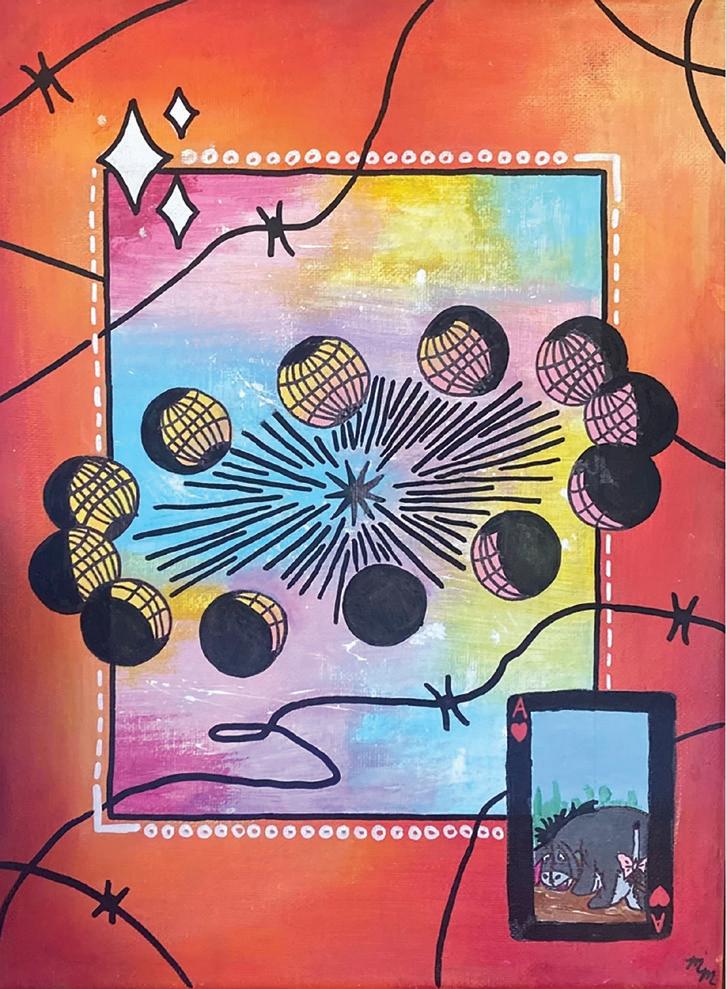
The year is 1967. Timothy Leary, a psychologist, is speaking to an audience at MIT about his research investigating the possible benefits of mind-altering drugs such as LSD and psilocybin.
Through experiments with psychedelics, Leary claimed to have discovered a “new way of life,” seeing the drugs as a pathway to a society where people could live life to the fullest for the first time.
Although the future of psychedelics seemed promising, there was also danger.
“It’s a dangerous chemical; you have to know how to use it,” Leary said, referring to LSD.


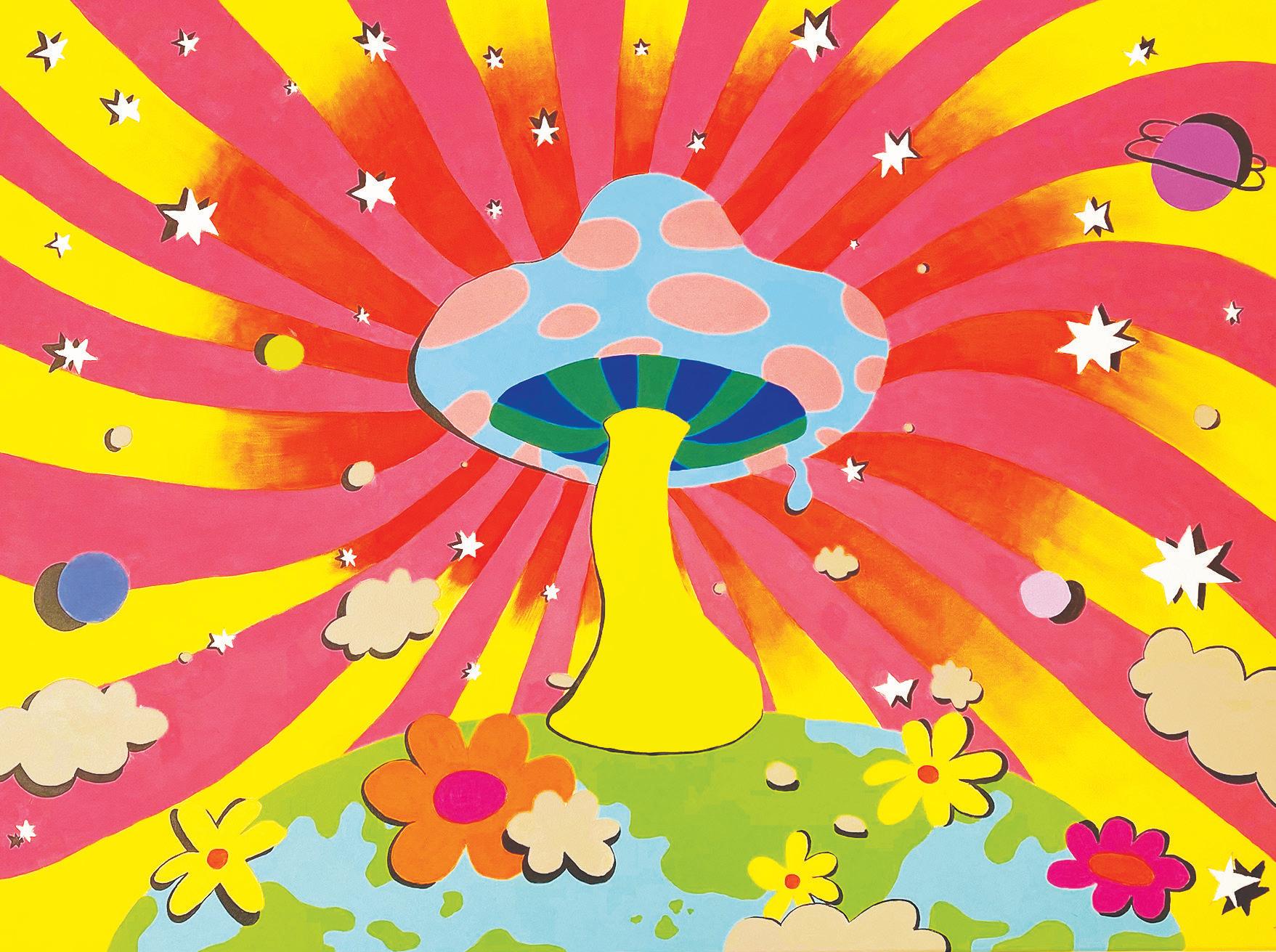
After the government spent many laborious years researching psychedelic drugs, the lab investigations, trials, and funding halted.
The U.S. Justice Department determined that psychedelic drugs had “a high potential for abuse.”
The once hopeful future of psychedelics had turned bleak.
The debate about whether or not society would benefit from harnessing the power of psychedelic drugs is just as prominent today as in the 1960s.
“What we don’t realize,” said psychology instructor Meghan Roarty, “is that we use drugs all the time to treat people medically and people with mental illness.”
Society’s perspective on psychedelic drugs is changing, and the regulations surrounding them are evolving.
As a new resurgence has bloomed, it is not benign to wonder whether or not
the United States will rethink its decision to make psychedelics illegal. Most of this comes from the encouragement of the legalization of psilocybin, a psychedelic drug derived from mushrooms.
“Something like psilocybin is going to alter the way you use different parts of your brain and open up new pathways,” said Roarty.
Oregon has effectively ended the criminalization of psilocybin, which is compelling evidence that views on psychedelic drugs are changing.
Psychedelic drugs like psilocybin have helped many people struggling with mental illness.
The therapeutic benefits of these drugs are appreciated by various community members, from those looking to relieve trauma to people relaxing on the beach.
“For mental illness, I think the benefits are huge, as long as it’s being used in a safe way with somebody who is a trained professional, not just on your own,” said Roarty.
Although Santa Cruz and Oakland have taken steps to completely decriminalize the use of psilocybin, the state has not legalized the drug, making it technically illegal in Santa Barbara County.
However, persecution is deprioritized across the state. “Deprioritized” means that while the drug is illegal, the government turns a blind eye to its use of it for the most part.
“I could see in the future, California as a state eventually being one of the states that legalize psychedelics,” said Roarty. Growing popularity along with the decriminalization occurring across the country, makes it appear that restrictions surrounding the drug will be removed entirely, even if it takes a while.
It would not be surprising if Santa Barbara, a renowned sanctuary to counterculture rituals, including psychedelics, made a push to legalize psilocybin in the near future.
In the meantime, illegal psychedelic use is increasing in Santa Barbara, as all it requires is “knowing the right person,” according to the Independent.
“There are a lot of private firms now going into psychedelic research or just mass producing psychedelics so you have to be careful about who is actually administering them,” said Roarty.
Legalization would reduce the risks of obtaining psychedelics from third-party sources.
However, it would also beg the question of commercializing a once “fringe” counterculture substance.
Santa Barbara County has already experienced a similar effect: the legalization of marijuana and the changes that came from cannabis cultivation turning from a counterculture movement to a booming commercial industry.
“Once you make something easily accessible and take away the stigma,
that can open it up which can help for treatment but also for more abuse,” said Roarty.
A major factor that dissuades psychedelic legalization is the possibility of a substance that has medical uses becoming a recreational drug that is easily accessible because it is legal.
“Caffeine is a drug,” said Roarty, “But there are different psychological levels of drugs.”
Psychedelics have a high potential to help society, but if used in the wrong way could create disparaging effects.
“If you just take a psychedelic, it’s not like you will be cured all of the sudden,” said Roarty. “Part of it is that you need to have the psychotherapy as well.”
In a world of increasing technology and research, the drug’s options to treat different ailments are becoming more widely available.
“If they are suffering from trauma, PTSD, anxiety or panic attacks, even depression, being able to work with a therapist one on one while under the influence of a psychedelic has helped them tremendously,” said Roarty.
A Santa Barbara Independent article highlighted the popularity of psychedelic drugs such as psilocybin and ketamine (a medically legal psychedelic).
Right now, the United States is the closest it has ever been to liberating the use of psychedelic drugs since the 1960s, with the first stepping stone in recent years being the legalization of psilocybin.
“If you have a predisposition toward schizophrenia or another psychotic disorder, then that’s something you really have to think about,” Roarty said.
Psilocybin, which can be experimental and sometimes therapeutic comes with risks.
Could psilocybin become the next cutting-edge medicine?
Only time and the research that is being conducted will tell.
For now, we must protect the safety of our community by using psychedelics safely and therapeutically.
As Timothy Leary said in 1967, “We need to know what they can do, what they can’t do, and that sometimes they destroy.”
CAMP
The use of psychedelic drugs is ramping up in Santa Barbara. One catch: it’s still technically illegal.
I could see in the future, California as a state eventually being one of the states that legalize psychedelics.
- Meghan Roarty
If one were to sit down and flip through the overpriced and extensive paged history books that every student buys at some point in their high school career, they would find only a handful of pages that mention women. And of that handful, only a quarter specifically feature the issues of women’s rights.
Women are treated as submissive and sexualized beings, especially in the workplace. Media distorts women and leaves a path for future generations to do the same.

“There is a fear of women’s empowerment,” says history teacher Dena Montague when asked why this cycle of oppression manifests with each generation.
Society has taken to heart this cycle of undermining the power that women could obtain if it were not for the vicious stereotypes that breed over time. In the workplace, women are considered too emotional to be in leadership roles.
According to a post from CNBC, female actors’ salaries are 1.1 million dollars less than their equal male costars.
And all because of what? Because women have different bodies than men? Because of the difference between estrogen and testosterone? Because women have reproductive systems?
There is no sense in those explanations. The answer is this: there is no worthy reason why women are less fit than men regarding intellect, emotion, or performance.
Women have played the role of
passive mothers and submissive wives for centuries because of stereotypes that genuinely have no essence.
Women slowly began to demand and gain rights, and they eventually entered the traditional work roles meant for men during WWI.
By the late 1960s, women began to take on male-dominated roles in labor due to wartime; and from there, a silent uprising began, placing women in the workplace, but not without evolving discrimination.
Women were considered less important than men. They were deemed unintelligent and were not allowed to work, and their only roles in society were domestic.
Women were governed, and controlled by male figures in their life, whether a husband or father.
Today, STEM professions are male-dominated, and women face discrimination simply because of their gender.
In male-dominated fields, women report dealing with gender discrimination, which includes dealing with double standards, exclusion from important meetings, being passed up for promotions, and being more harshly evaluated than male colleagues.
There is constant pressure on working females to be perfect because, often, they are often judged harsher than men. If a woman speaks up for herself, she becomes bossy or a bitch.
“To say I want my rights is seen as negative in today’s society, as though you are a man-hater,” says Montague.
school, was that he had gone far down in my social media and found a photo of my husband and me, and I was in a bathing suit.”
“He showed it to me and said, ‘you look really beautiful’. Him finding that meant he was deep searching through my social media, and that made me very uncomfortable,” said Alkire.
If a woman does not speak up for herself, she is “weak” and submissive. There is no justifiable reasoning behind the double standards society created for men and women, yet they are still present in daily life.
“It’s everywhere,” says Montague, addressing misogyny in present-day society. “It’s a question of men and women to see if things are going to progress. It shouldn’t be the burden of women to always struggle to say this is a problem and we need change.”
In professions such as engineering, the assumption is that a female in this profession does not know what she is doing and, therefore, must require male help.
Many women have experienced their male colleagues checking up on them leading to mansplaining, a condescending way for a man to try to prove to a woman that he is more intelligent.
As if this is not enough, women have to deal with sexualization within the place they work.
According to McKinsey & Company, a global consulting company, 35% of women in corporate America reported being sexually harassed by their male colleagues, and 55% senior leadership sexually harassed.
“At my previous school, I had to report one of my colleagues for harassment. He was a male colleague and was getting too familiar, said Head of Upper School Melissa Alkire, “After years of feeling uncomfortable, what finally made me report his behavior to the head of
This concept of sexualization within a workplace is unacceptable, yet most companies ignore the complaints from women, with complete disregard for the “no sexual harassment policy.”
Few women report incidents of sexual harassment, for worry of demoting their status as a professional due to patronizing remarks from their male colleagues and being seen as dramatic or too emotional.
“I didn’t report him earlier because I was afraid. I was a young teacher who was grateful for my job, and he had more authority in the community than I did. But after I reported him, there were other women who thanked me, because they wanted to report him too,” Alkire said.

Fifty years ago, Congress approved the Equal Rights Amendment, yet it is still not a part of the Constitution. This concept of falsified equal rights is seen in the wage gap in the United States and the world.
“The wage gap between women and men is still a persistent problem. You’re seeing a higher rate of women going into higher education, graduating, doing better in school, but still when they enter the workforce they are getting paid less and not moving up the ladder,” says Montague.
According to the World Bank, men receive $172 trillion more than women per year. In the United States, women’s annual salaries are about 17% less than men’s.
In Hollywood, the wage gap between men and women is $1 million.
There is no reasoning behind this other than the gender difference. There are many theories as to why women are marginalized in society. One of them includes their ability to have children.
“One of the many reasons is our reproductive nature. There is a moment in time, should a woman choose to have a baby, when her ability to participate in work becomes compromised and shifted, said Alkire. “We, as a society, do not provide structural support, care, or consideration, and then we expect women to return to work. We don’t have systems or structures that help women re-enter the work system.”
There’s a lack of a safety net in America for women and mothers, explains Montague.
“Usually it’s the women that stop their career. There’s a whole stigma over mothers belonging in one role as the housekeeper and child bearer.
There’s a lack of support for child care and maternity leave.”
Why are women still being paid millions of dollars less than men while also getting no support during maternity?
Simply because of the incredible ability to bring a new life into the world?
Because of the need to take time off to raise their child? What justification is there for this? The answer is none. There is no justifying why women are still paid less than men when they work just as hard, if not twice as hard, as men. And why should what we were born with determine our worth in society?
We have passed the era of men being superior to women, and it is time for equal rights to become a reality instead of a thought.
“Women are extraordinary. I think with all of the burden women have to deal with in society, we are still thriving, which says a lot. Imagine if those barriers were taken down.”
Women are viewed as inferior to men in both the workplace and in society, detrimentally affecting all women and their identity in today’s world.
WORDS and ART by ELLI WESTMACOTT and CHRISTIANA CINO
violence, which typically takes the form of sexual assault.
Transgender persons and bisexual women experience the LGBTQ community’s most significant rates of sexual violence.
In both communities, sexual assault often occurs at a young age.
WORDS and ART by MAGDALENA AMEZAGAOxford Languages defines rape culture as “a society or environment whose prevailing social attitudes have the effect of normalizing or trivializing sexual assault and abuse.”
It is easy to witness rape culture in our society. The language of rape is ubiquitous. Rape culture proposes that rape is widespread and accepted in American society and is an extreme example of pervasive societal sexism and misogyny. Domination and objectification of women is the main contributor to rape culture.
Surprisingly, this way of thinking can be seen clearly in modern music. Artists, male and female, rap or sing about objectifying themselves or another gender.
In 2017, Billboard and Forbes named rap/hip-hop the dominant genre of music in the United States, taking the place of rock music.
Because of its popularity, this type of music reaches more young people than ever.
The use of sexist and sexual themes expressed through modern music often shapes behavior when these messages are portrayed throughout one’s youth. Songs frequently refer to women in a submissive manner by using terms like “hoe” and “bitch.” These phrases are used so frequently that we become desensitized to them.
Rap sometimes contains lyrics that demote women to mere objects or instruments to be exploited rather than human beings. It also frequently contains lyrics that justify sexual or violent acts against women.
Objectified women are considered less than human, less capable of making moral judgments, and less deserv-
ing of decent treatment by others. When someone is perceived as lacking moral standing and mental capacity, this perception has a detrimental impact on how they are treated.
For instance, those who see others as having less moral fortitude are more likely to subject them to harm.
Sexualized women are considered by some as deficient in moral and mental competence, making them less capable, less human, and less believable when they come forward about their assault.
This is a result of constant messaging from a young age that teaches many of us that an entire gender exists only to satisfy others’ needs.
control their desires and cannot be held accountable for their actions.
In their developmental years, children should be taught not to objectify women and be held accountable for their actions.
The rationale for rape and the idea that sexual violence against women is their responsibility is fostered by this environment.
The issue of rape culture in schools is pervasive and widespread, and most schools fail to provide adequate sex education with a curriculum that teaches about the intricacies of consent and the role social media and technology play in creating rape culture.
The social aspect of sex needs to be addressed first, and conversations about gray zones like pressure and power dynamics should be part of this.
All efforts to educate students about sexual assault in schools should incorporate equality and consent.
Some of society’s seemingly harmless habits can teach children beliefs that contribute to rape culture.
Parents frequently utilize the adage “boys will be boys” to defend their sons’ behavior, not only excusing irresponsible actions, but enforcing the patriarchal notions of what a man should be.
Schools have an impact—they hold girls accountable for how young boys perceive them by creating strict dress codes; labeling a girl’s outfit as “distracting” indicates that she is to blame if someone is bothered by it.
This reinforces gender stereotypes and encourages victim-blaming and “slut-shaming.”
It also implies that males cannot
Consent entails being aware of and respecting one’s own boundaries and those of others.
Learning about consent can result from better connections with friends, family, and, eventually, love partners.
Sexual assault affects every demographic and community, including the LGBTQ community.
According to the Centers for Disease Control and Prevention, rates of sexual assault among lesbian, gay, and bisexual people are on par with or more significant than among heterosexual people (CDC).
Due to their higher rates of marginalization, stigma, and poverty, LGBTQ individuals are more susceptible to sexual assault. Additionally, they encounter more instances of hate-related
A big part of rape culture is victim blaming. People can point the finger at a victim in order to separate themselves from a bad situation.
They blame the victim’s circumstances or actions rather than face the fact that the victim had no choice in the matter, and that nobody is immune to assault.
Others can make the victim appear different by labeling or blaming the victim. A survivor can be marginalized by victim-blaming beliefs, making it more challenging to come forward and report the abuse.
Additionally, they might struggle to recognize themselves as sexual assault survivors.
A victim will not feel safe coming forward if they believe that society is holding them responsible for the abuse.
Most people believe that rapists are motivated by sexual desire. Michael Kimmel explores the motivations of rape in “An Unnatural History of Rape.” Some rapes, in Kimmel’s words, “are the result of a combination of sexual desire,
disrespect for women’s bodily integrity, and a feeling of sexual entitlement... [but] it’s not just about sex.”

Sexual violence is committed by people who have a strong sense of entitlement and who are driven by a desire for dominance.
Most offenders follow sexist preconceptions and social norms of masculinity and femininity.
Social norms and culture impact sexual behavior by defining acceptable sexual relationships and influencing the repercussions of sexual expression.
The fact that culture influences male aggression implies that rape is taught and, therefore, can be eradicated.
We as a society should not accept this as the norm and we should work together to change our culture.
Sexual assault education courses such as the Personal Development course at Laguna are necessary to help people build new habits and let go of stereotypes and biases.
As rape culture becomes normalized and ignored, it fosters an atmosphere that dismisses women’s protection and rights.
Rape culture minimizes the seriousness of sexual violence and rationalizes sexual assault.
The culture we now live in is one in which sexist attitudes, beliefs, and actions are devalued and made to seem com-
monplace. The system must help women feel more comfortable speaking up; as we become more conscious of the way rape culture has grown in our society, we can hopefully work to help women feel safer.
As society normalizes rape culture, it creates an environment that disregards women’s rights and safety.
This is a result of constant messaging from a young age that teaches many of us that an entire gender exists only to satisfy others’ needs.
The protests conducted by the “Just Stop Oil” movement are a controversial attempt to get the media to pay attention to the oil crisis throughout the world.
WORDS by CIERRA NERVO ART by ALEXIA ACOSTADisruption of the ozone layer, ocean drilling and spills, collapsing ecosystems, risks to all living things: these are results of oil pollution.
Although environmentalists have been looking for a renewable energy replacement, oil has been a key economical factor and primary energy source for years.
Simply removing oil from the equation, if that was even an option, would affect our ways of life in ways that we could not fathom.
We are victims of an oil-dependent society that has already permanently damaged our planet. Large corporate federations and their consumers have neglected the planet by promoting such pollution.
While the average person might not be able to use an oil alternative, it is each person’s responsibility to somehow commit to change, whether in local offices or petitions.
One movement made up of multiple organizations is dedicated to ensuring that governments commit to ending all new licenses and production of fossil fuels.
The Just Stop Oil coalition, predominantly located in the United Kingdom, consists of volunteers taking to the streets with protests, who point fingers at government officials and companies for neglecting the advantages they have to replace oil and gas with renewable sources.
While their message is important and has gained considerable coverage, their desperate attempt to get the media’s attention in turn gave them the wrong kind of attention.
Members of this environmental activist group have been most noticeable in headlines reporting that they vandalized famous pieces of artwork. What does art have to do with oil?
“Their actions aren’t justified; they are designed to get attention, which they do, but in the end it just makes the movement seem like a bunch of wackos,” said AP Environmental Science instructor Erik Faust.
However, Alyssa Jane, an environmental studies major at UCSB and a member of the Sunrise Movement, a U.S. based climate advocacy organization, believes that their actions are justified.
She believes that the media response shows that the public cares more about art.
“The reaction to harming art has been so extreme, but the reaction to the climate crisis hasn’t had the same mobilization of people.”
These protesters have been found tying themselves to buildings, blocking traffic, throwing paint at major banks, and even throwing cake at a mannequin of the current king of England.
The most notable acts that have been committed, however, have got art historians fuming.
They have been gluing themselves to and throwing food at famous pieces of artwork, followed by a speech on whether art or the earth’s well-being is more important.
“This is gonna make advocates for fossil fuel use seem like more extremists and antagonistic,”Faust said.
Van Gogh’s “Sunflowers,”
Johannes Vermeer’s “Girl with a Pearl Earring,” a replica of the Da Vinci’s “The Last Supper,” Gustav Klimt’s “Death and Life,” and Claude Monet’s “Meules” are a few of the paintings that have already been attacked during these protests.
Although covered by glass, the risk of damaging even the frame of these magnificent paintings is enough to diminish the message of the Just Stop Oil movement.

These acts of vandalism have painted a bad picture for the anti-oil movement as a whole.
“Holding up a sign and throwing food is not gonna make meaningful change,” said Faust.
This begs the question, is the spreading of the message to stop oil production an excuse to destroy famous works or property?
Art history teacher Valerie Yoshimura had something similar to say about the Just Stop Oil protesters: “The disconnect between attacking art and lamenting the climate crisis made me question the efficacy of their approach, “A good action by activists should, I believe, better align the protest with the problem.”
Attacking artwork and angering museum curators creates
a bigger divide between environmentalists and the public. Taking action to protect our planet, and the continuation of the human race, requires methods beyond vandalism. While protesting is a powerful form of taking action, it can only do so much.
Valerie Yoshimura recommends that if climate activists want to continue focusing on art in terms of their message, they could create a display of photos and reproductions of artwork that highlights the beauty of our planet.
“They could be juxtaposed with photographs of real devastation caused by the climate crisis, said Yoshimura.
“By evoking empathy in the viewer, they could then have an audience more willing to take their exhortations to heart.”
Alyssa Jane–while in support of the Just Stop Oil movement’s actions–believes that there are more efficient ways to go about climate action.
“Instead of targeting art, they could target oil companies
and government offices that are directly responsible for oil pollution. Educating the public and looking into local politics goes a long way.”
In a way, we all have our lives because the oil industry exists; treating them and museum curators like villains is problematic.
Building a consensus will make people believe that the activists are looking out for their best interests. Finding renewable ways to replace oil production and end such pollution requires sacrifice.
Faust elaborated on beyond the compounds of art, and what can be done outside of museums. “Real meaningful change requires sacrifice. The civil rights movement was successful because people put themselves at risk,” said Faust.
“It requires long, deliberate effort that is reasonable; that treats other human beings like they actually matter.”
“Holding up a sign and throwing food is not gonna make meaningful change.”
- Erik Faust

Did you know that more than 60 million Hershey kisses are made each day!
Results:
Guessed Ghirardelli was Hershey’s, guessed Hershey’s was Ghirardelli, and corrected guessed Swiss Miss.



Q: Which hot chocolate tasted the best?
A: The second hot chocolate (Ghiradelli) tasted the best. I was surprised it was not Hershey, but it was very creamy and melted in my mouth.

Q: What is your favorite hot chocolate topping?
A: I just like marshmallows on my hot cocoa.
Did you know that Ghirardelli is the oldest continuously operating operating chocolate maker in America?
Senior Jade Silva
Results:
Correctly guessed each brand after the taste test.
Q: Which hot coco brand was your favorite?
A: Swiss Miss was my favorite because it tasted sweeter than the other two. There is also a very nostalgic taste to Swiss Miss that made me recognize the brand right away.
Q: What is your favorite hot cocoa brand?
A: My favorite is Abuelita.

Did you know that Swiss Miss was originally called Brown Swiss referring to the cows used to make it?


Faculty Liv Gonzalez
Results:
Correctly guessed each brand after the taste test.
Q: Were you surprised by the results?
A: I was not really surprised because I could kind of smell and taste the difference, so it felt like they had the appropriate level of flavor and sweetness based on the brand, especially for Swiss Miss.
Q: What is your favorite hot chocolate topping?
A: My favorite topping is a combination of whipped cream and marshmallows.

Three participants took a blind taste test of`Hershey, Swiss Miss, and Ghirardelli hot chocolates to try to correctly guess the brands.
WORDS and ART by ABBY KIMSophomore Ryan Kim
Generations of readers, young and old, have fallen in love with the coming-of-age classic— “Little Women.”
WORDS by SOFIA RAMIREZ and DIONNE PETERSON


















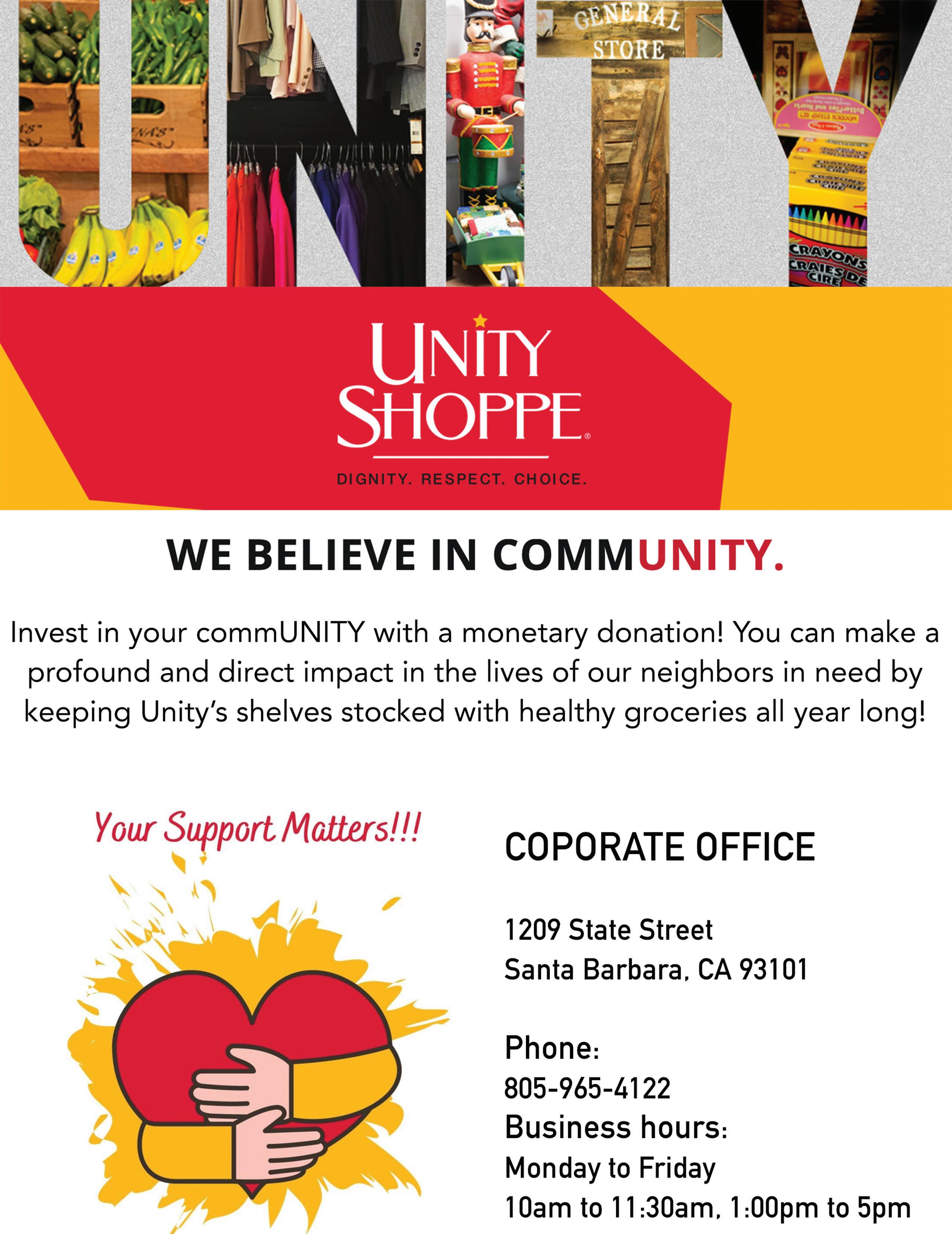
Alcohol-infused parties, car rides blasting pop favorites, and excessive drug glamorization.
Parent-child feuds, rocky relationships, and intense friendships. Complex feelings, school fights, and eccentric styles. All are portrayed in the modern day genre of teen dramas.
Everyone loves a good binge-worthy show to watch on school nights, but how relatable are these high school depictions to the actual growing up experience?
Teens today are in the complicated part of their lives where they are too old to act like children, but too young to be respected as adults.
They are figuring out who they are, finalizing their education, and attempting to live out the last years of their youth before they face the trials and errors of adulthood.
This interesting portion in teenage lives makes for entertaining screen plots that have the audience gripping the edge of their seats.
Teen dramas spark conversations about mature topics that are otherwise not discussed, such as substance use and sexual education.
Regardless if someone relates to these experiences, they are essential to see on the big screen in order to educate the audience.
However, when over-glamorized, these shows wander away from educating the audience to painting a false picture of teen experiences for the sole purpose of entertainment.
“It is incredibly hard to find a high school television show that accurately portrays what it is like to be a teenager,” said sophomore Olivia De Ponce. “One of the most unrealistic [shows] in my opinion is ‘Gossip Girl.’”
To Olivia, the show “Gossip Girl” is diluted and oversexualized, one of the many controversial high school
depictions on TV.“ The characters, while entertaining, are nothing but fiction.”
Teenagers, and their high school experiences, are typically differentiated from other generations by style, slang, social media references, dating experiences, and unique sets of behavior that separates them from all other age groups.
Many of these factors are mis-represented in teen dramas, and instead play into the stereotypical roles of “rebellious” teens.
“‘Euphoria’ and ‘Heartbreak High’ dig into deeper topics, such as sex and drug use, but sometimes it comes across as too glorifying instead of educating,” said junior Elyse Weaver.
“Heartbreak High,” a 2022 Australian Netflix original, depicts autistic representation, LGBTQIA+ characters, and realistic sexual education that is typically poorly shown on other shows.
“Euphoria,” a 2019 HBO original, is another show known for its depictions on the hardships of addiction and identity. While both shows share more truth than others, the glamorization of parties and lack of school-related subjects are problematic.
“Euphoria” disorients audiences with strobe lights and glittery makeup, possibly leading the audience to view substance use and underage sex as more glorious than it actually is.
“‘Euphoria’ is a pretty relatable show because of its raw portrayal of more mature content, like drug use and self harm, that teens can relate to. Although it’s not always a universal experience and the content is very exaggerated,” said junior Jayla Provance.
“I feel like ‘Never Have I Ever’ is more realistic because of how friendships and behavior are portrayed.
Another seemingly relatable show, according to sophomore Sydney Fisher, is “insatiable.”
The show depicts relatable topics regarding physical insecurities. “It addresses the unrealistic expectation set for women, and how they are treated if they don’t fit into it.”
The glamorization of mature topics isn’t the only problem in teen dramas.
The lack of school-related subjects and more universal experiences, such as actually attending class and putting in the tedious effort of getting good grades, negatively affects how older generations see the effort they put into their education.
Keeping one’s grades up, at the risk of impacting one’s mental health, is a rarely shown concept that is one of the most universal experiences for high school students.
Teenagers struggle with academic validation and the pressure put on them by peers, teachers, family members, and themselves.
“Teen shows don’t put enough emphasis on how mentally draining it is to always meet those expectations,” said Sydney.
Sydney also brings up the misuse of communication: “In most shows that I’ve watched, pretty much everything concerning social media and slang is somewhat inaccurate.”
While slang might be hard to represent on TV, as its connotation is constantly evolving, social media and its connection to friendships typically feel forced.

“It seems like the adults that are writing the scripts are basing it off of their perception of how teens interact.”
Social media and slang written by adult directors contribute to the poorly written stereotypical behavior that puts a bad label on generation Z. The concept of cliques is also vastly different in the real world.
While social hierarchies and online bullying are two very real things, they aren’t as cliche as teen dramas make them out to be.
The difference between conflicting friend groups can be as subtle as simply who one is hanging out with who, not labels such as “the jocks” and “the nerds.”
Unrealistic personalities and interactions, and a lack of portraying the actual education side of highschool, contributes to false standards that younger kids watching the shows will see.
The result of being drastically misrepresented in teen dramas not only affects how the world sees teens, but influences bad behavior onto generation Z and the younger generations.
However, any of the previous binge-worthy hits should still be enjoyed, but with a certain understanding of the differences between on screen and off screen.
Instead of treating the teen drama genre as a basis on how to treat one’s livelihood and education, they should be viewed as cautionary tales on what to avoid while living up one’s youth.
High school-oriented TV shows depict “coming of age” aesthetics through social media, slang, and sexual liberation; but not all of these shows accurately portray this generation’s teenage years.
“It is incredibly hard to find a high school television show that accurately portrays what it is like to be a teenager.”
- Olivia De Ponce
The Game of Thrones ending “is possibly the worst ending of a TV show that ever existed,” wrote one fan on social media, “I am so angry right now.”
In 2019, one of the most popular television series in history ended. Now, three years later, fans have been asked whether to rejoin the Thrones universe with HBO’s new show “House of the Dragon.”
The story is a prequel reaching back 200 years to tell the story of the Targaryen civil war long before the dynasty lost the throne.
At Dragon’s crux is the aptly named game of thrones: the struggle within a family over the crown’s succession. The show’s first episode opens with foreshadowing detailing the strife: nobles across the seven kingdoms choose the male Viserys (Paddy Considine) over his older female cousin, Rhaenys (Eve Best), as heir to the throne. This decision sets the tone for the rest of the show; as Rhaenys puts it: “Men would sooner put the realm to the torch than see a woman ascend the Iron Throne.”
In addition to the fire breathing dragons, atrocious death at the royal weddings, and sprinkles of incest, there are many other iconic themes in Thrones that returned in “House of the Dragon.”
“My favorite part of “Game of Thrones” is when they put characters in crazy scenarios where it’s so hard to know what the right thing to do is,” said philosophy instructor James Savage, ”It’s so interesting to see what decisions the characters make.”
Dragon centers around the rela tionship between Rhaenyra Targaryen (Emma D’Arcy, who is the first non-bi nary person to play a main role in the Thrones universe) and Alicent Hightow er (Olivia Cooke), as they are forced to make delicate choices that balance fam ily, power, and survival.
Childhood best friends, the two women are driven apart by the power struggle over who will inherit the throne from King Viserys.

Both women slowly learn how to play the game of thrones as a woman, meaning sacrificing their own happiness in order to dedicate her life to giving birth to a son who will be the heir to the throne.
“I liked Alicent Hightower’s whole plotline and the ideas it explored, said junior Elyse Weaver, “such as how the patriarchy turns women against each other.”

Alicent has always been taught to be obedience; she envies Ryaenyra for how much freedom she has because Alicent’s whole world is centered around marriage and her children, while Rhaenyra is as unruly as before and living her life freely; Rhaenyra seems to get away from the obligation of marriage for a while, and Alicent felt a sense of unfairness.
Alicent is also influenced and manipulated by her father, Otto, to hate Rhaenyra for how “irresponsible and incompetent” she is as a princess and leader.
Dragon intentionally explores the themes of sex and violence; the overar-

trated with three agonizing birth scenes filled with shocking gore.

The predecessor show, Thrones, received considerable criticism for the show’s depiction of sexual violence, often used in ways viewers found unnecessary and tangential to the plot.
“People use women’s abuse for entertainment or shock value,” said Elyse.
In contrast to Thrones, the scenes of birth showcase the different struggles women in Martin’s universe face.
HBO invested nearly $20 million (U.S.) in each of the show’s 10 episodes, making the series the most expensive on the platform since Thrones. The money seems to have paid off–the premier notched nearly 10 million viewers, and HBO reported that each episode hit an average of 29 million viewers.
The windfall made a case for renewing self-evident in a network looking to cut costs after acquisition.
Immediately after purchasing HBO and its larger streaming service, HBO Max, Discovery executives angered Hollywood by cutting productions in development and canceling releases. Luckily for fans, the success of Dragon has ensured the show a place on the screen for
The




























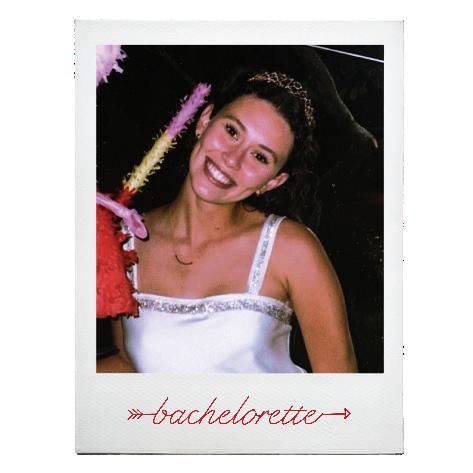



How long would it take to spot someone wearing denim while walking around
“I have a pair of jeans from Levis that were designed in partnership with a Swedish recycling brand called Renew cell. They are made out of a patented circular material made by recycling cotton from worn-out clothes called circulose,” said Eloise.
Levi’s Secondhand, a site designed to sell pre-loved clothing at more afford able prices, offers vintage denim and newly designed,
low-waisted pants, “I wear pants or jeans almost every day.”
Denim is unisex, ageless, and with sec-


are, the better.
Sophomore Eloise Phillips said, “I love a pair of good vintage jeans. I have a few of which I bought second hand in Europe and some that I was given by my mom, who actually wore the jeans when she was about my age.”


Levi Strauss designed the first blue jeans in 1873 during the Gold Rush in San Fran cisco.
“Jeans will always be one of my go-to garments, as they are so versatile,” said Eloise. A few major denim brands are starting to branch toward sustain ability.
Johnson wears den im on a daily basis.
“I buy all my jeans from Italy when I visit.”
Students and staff on campus are spotted in jeans no matter the season.
“I wear Polar 93’s from Lighthouse Skate Shop“ said sophomore Carew Rice, who styles jeans with everything.
Pants are a closet staple

your junior year soccer season, how have you bounced back?”


A: “It was tough, but I had to continue to support my team, and am so grateful for the support I received from my fellow teammates and faculty members, which allowed me to bounce back pretty well.”
Q: “What is your pregame diet, and what songs do you listen to that hype you up?”
A: “My pregame snack is usually relatively light; I usually eat a protein bar and make sure to hydrate. I typically listen to rap music to really get into the right mindset for the game.”
Q: “What is a memorable win or a tie that you’ve had so far?”
A: “Two ties that were huge for our team were against Thacher and Foothill Tech. We didn’t play great against Santa Clara, but we bounced back well from a slow start and secured the victory.”

 PAGE by DAVIS OHANIAN and ELI MEISEL
PAGE by DAVIS OHANIAN and ELI MEISEL
you got a new coach this season?”
A: “Ever since we got a new coach, we have been able to pretty easily adapt to different schemes. Coach Sherman has been a great asset to this program, as he coached for many years at Dos Pueblos high school and even coached Mr. Lopes. I do think that we are in great hands”

Q: “How did your big win over Orcutt Academy affect your team chemistry?”
A: “I think that a lot clicked, and I would credit that to many practices over Thanksgiving. We really played selflessly and passed the ball around. This was a great team win that really advanced what we want to do as a program. We will continue to develop our schemes as a unit and attempt to perfect the processes that will lead us to victory. I be
“On our game days I like to start off my morning with a healthy meal that will keep me energized throughout the day. Our team has made a great pregame tradition of listening to music and wearing matching blue ribbons in our hair.”
Q: “How would you assess your season so far?”
A: “For the season opener it was amazing to have a blowout win, but we couldn’t let it get to our team’s ego. Throughout the rest of the season, we want to keep the confidence up and come into the games with the mindset that we are going to be successful and do the best that we can throughout all of our games.
Q: “Who has been an influential freshman on the team?”
A: “Lila has been an influential part of our team since the beginning of the season. Everyday, she continues to improve and grow.”
Q. Where do you usually play hockey?
A I play in Orange County, Anaheim, El Segundo, and tournaments in Canada, Chicago, and St. Louis. I’m currently playing for Varsity Poseidon Hockey in Simi Valley.

Q How long have you been playing hockey?
A. I’ve been playing since I was four. My brother was a figure skater, and I was always at the rink, so my mom bought me hockey skates. I started skating to let out energy
I scored the first goal in that game, which is one of my best memories. We went to state championships for California. I played hockey until about middle school and then went to private school, and I couldn’t leave to play hockey, so I started playing tennis. I was ranked pretty highly, I was 14th in Southern California, and I got selected for the Maccabi games, which are the Jewish Olympics.
Q What do you look for in a great coach?
The 2022 Qatar World Cup started with 32 hopeful teams seeking to win the title for their countries.
The tournament concluded with two contenders: France and Argentina, who competed for the glory of the World Cup championship.
Kylian Mbappé of France managed to score a hat trick in the final against Argentina to help his team reach a 3-3 tie at the end of extra time.
Argentina defeated the reigning champions 4-2 in a penalty shootout, and lifted the trophy for the third time in Argentina’s history and the first time since 1986.
With the World Cup win, Lionel Messi became one of soccer’s greatest stars, just like Pelé and Diego Maradona.
The 2022 World Cup had a fairytale-like ending, with Argentina winning the trophy.
Messi was finally able to claim the one prize that has always eluded him, and the one honor that he craved the most. But the glorious victory did not come easily. In the past two World Cups, Argentina experienced a narrow de feat against Germany in the final of 2014, and lost against France in the round of 16 in 2018.
“Messi has put in so much to be the best that people want him to succeed,” said junior Joshua Hansen.
The World Cup is an emotional victo ry for Argentina fans and for Messi.
Messi has a long list of achievements on the club and individual level.
He won La Liga, the Champions League, the Olympics, Club World Cup, and seven Ballon d’Or.
The success with his club seems to balance out with consecutive failures to
WORDS by LUCY WANG and ELI MEISEL ART by LUCY WANGdeliver a major championship for Argentina.
Finally, in 2021, Messi led Argentina to win the Copa America 1-0 against Brazil, which was the first major title that Messi won with his national team.

Less than a year later, he won the World Cup.
Following the win, the 35-year-old lifted the World Cup trophy surrounded by the cries and cheers of hundreds of thousands of fans, and with the whole world watching. He has cemented his place as one of the greatest players to ever played the game.
The performance of Kylian Mbappé also impressed many fans. The
goals in the final and dragged France to extra time and then a penalty shoot-out.
“I do think Mbappé is the best player in the world right now,” said the math instructor Grant MacNaughton. “He is unstoppable, and he is only 24, which is insane how much space he has in front of him to continue to grow.”
MacNaughton led a competition for students and faculty to make predictions on the games in which the winner of each stage received an award.
The games bought students together to watch and discuss the games, players, and to join the spirit of the World Cup event.
Freshman Finlay Sutherland won the group’s stage predictions, and received an official World Cup soccer ball at a school-wide assembly.
“The reason why I predicted most of the games correctly over other people was the many ties. A lot of people either put win or lose, even though ties are just as common,” said Finlay. “I gained lots of points from the 2-2 draw with Croatia and Belgium, which not many people expected.”
The overall winner of the prediction was senior Sadie Johnson; she received the replica soccer jersey from the national team of her choice. She chose England.
“I chose the England jersey because the number one Argentina Jersey was sold out.
“Secondly, I love Saka, Kane, and Bellingham, who all play for England. Thirdly, because my family originates there,” Sadie said.
The 2022 Qatar World Cup will be remembered as one of the most iconic World Cups in the history of this game.
“I greatly enjoyed watching the World Cup. I am so so so happy that Argentina won, Messi deserves it,” Sadie said.
Devin Eisman ( bottom right) competing for his current team Poseidon Hockey.Argentina defeated France and lifted the World Cup trophy for the first time since 1986.

“Life moves pretty fast. If you don’t stop and look around once in a while, you can miss it.”
- Ferris Bueller